Hello all!! It’s been ages since I’ve had a chance to post, but I’ve got a great story for you. I first met Cameron Smith in 2010 when he led my very first archaeology field school. I worked with him again as an assistant over the next two seasons, and he went off to work on a project he’d been dreaming about for some time: To design and create an open-source, high-altitude space suit for exploring the upper reaches of the atmosphere in a hot air balloon. Yup, a homemade space suit. I LOVE IT. Here’s a short piece a local news station did on Cameron a while back.
I’d never had time to help him out, but I watched his updates on Facebook over the last few years and loved every new milestone he managed to reach, along with the help from some very dedicated students. As time passed media outlets and other organizations began to take notice of his work and invited him to give presentations, and you can watch some of them here.
About a year ago Cameron told me he was planning to do a test balloon flight out in the desert somewhere and wanted to know if I’d like to come along as a photographer. Um, YES! So after about a year’s worth of scouting locations, he decided on the Alvord Desert in SE Washington, part of a network of dry, alkaline lake beds that stretch down into Nevada (The same desert network that hosts Burning Man, in fact), and a few weeks ago I, Cameron and the students, a professional production film crew, and an amazing photographer named Travis Stanton headed out to the big, empty desert to test out the suit at altitude. For context: The main purpose of the flight was to test the suit at a low altitude and see how it performed; were there any leaks, or issues with the air hoses, etc.
Yep, that’s us, after a 4am wakeup and an almost-perfect test flight (there was a bit of panic when that fan that inflated the balloon suddenly self-destructed, but we found a way to make it all work) . You can see a few more great shots on Travis’s Instagram here. I don’t have the level of camera gear that Travis has (The footage he shot with his camera drone was AMAZING) but I got some good behind-the-scenes shots of our preparations.
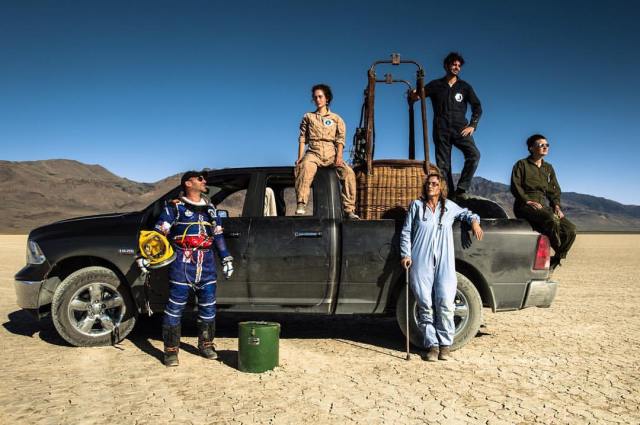
PHOTO CREDIT: TRAVIS STANTON (in my defense, I had about three layers of clothes on under that fire-resistant jumpsuit, which is why I’m shaped like a Teletubby in this shot)
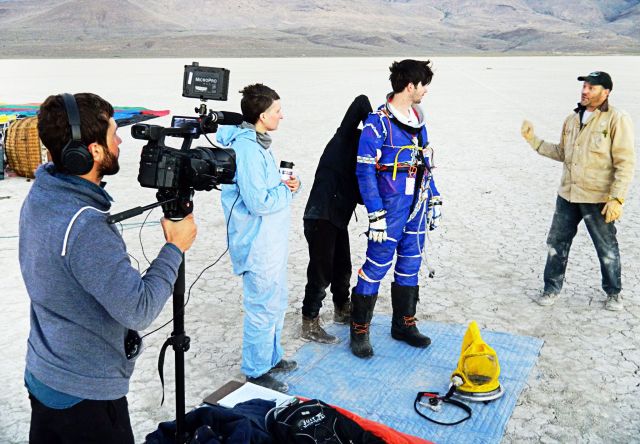
Cameron on the left, and Ben, the trusty guinea pig, trying out the suit
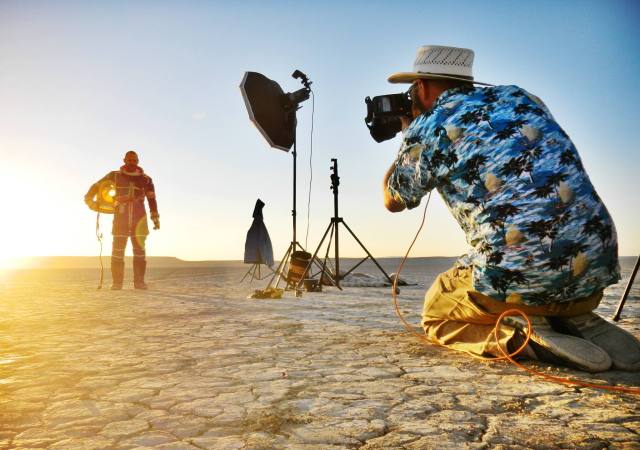
Travis Stanton getting some excellent “hero” shots of Cameron after the test.
You can see a couple of the hero shots on Travis’s website here
There are still plenty of design kinks to work out (as one would expect when building a space suit from scratch), such as figuring out how to make it easier to get into and out of. Poor Ben, he’s such a good sport.
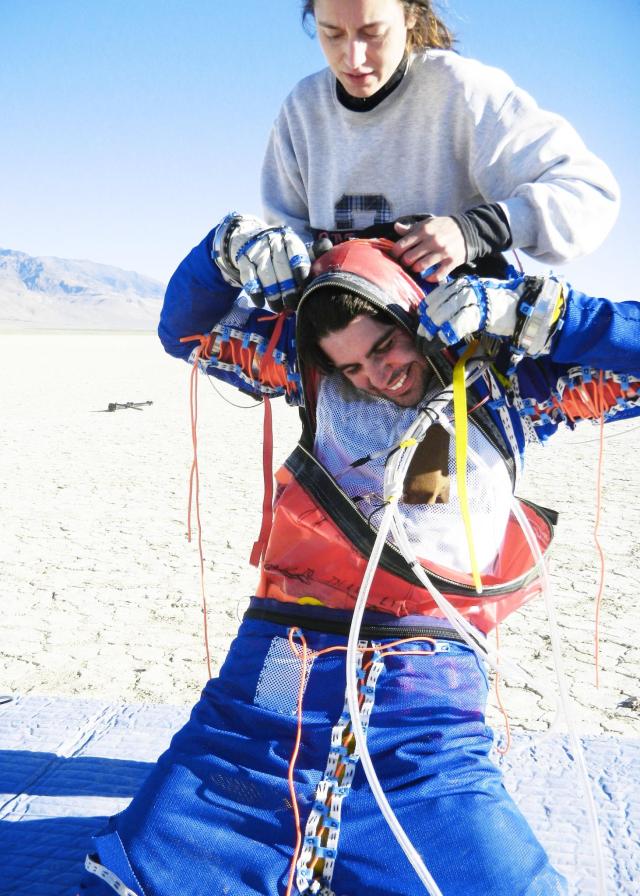
Ben trying to squeeze out of the suit. It’s designed to fit Cameron’s frame, and Ben is probably a good 5″ taller.
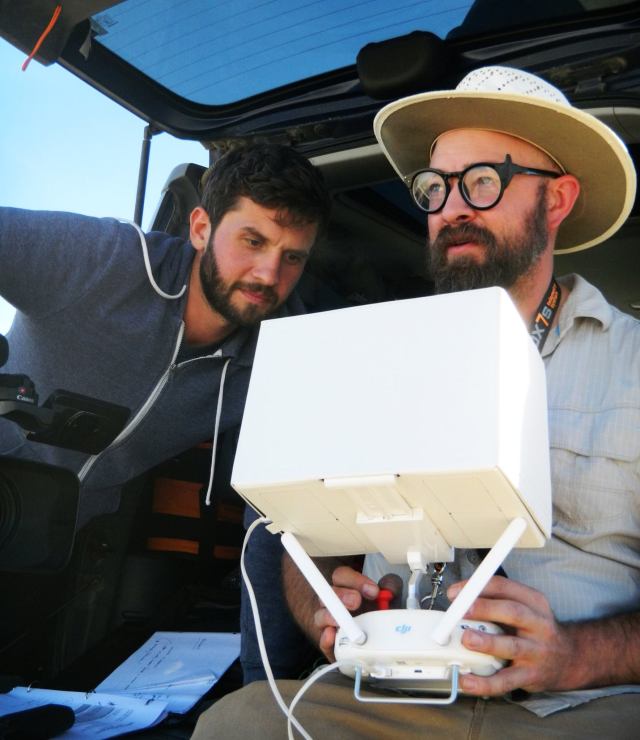
Travis controlling the camera drone with joysticks and a live viewing screen, while Tiberius, the film crew cameraman, watches.
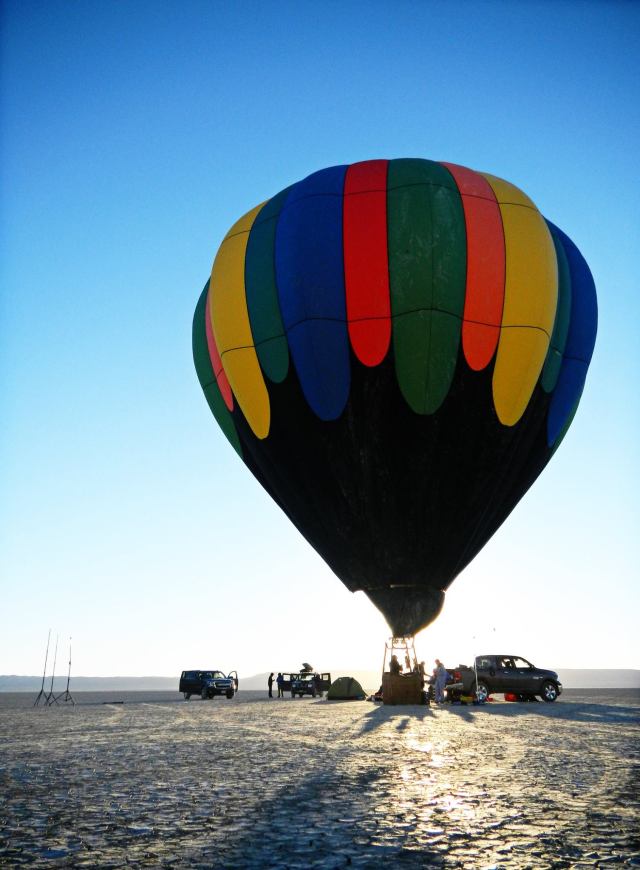
It’s so difficult to capture just how huge and empty and flat that desert is, and how incredibly beautiful.
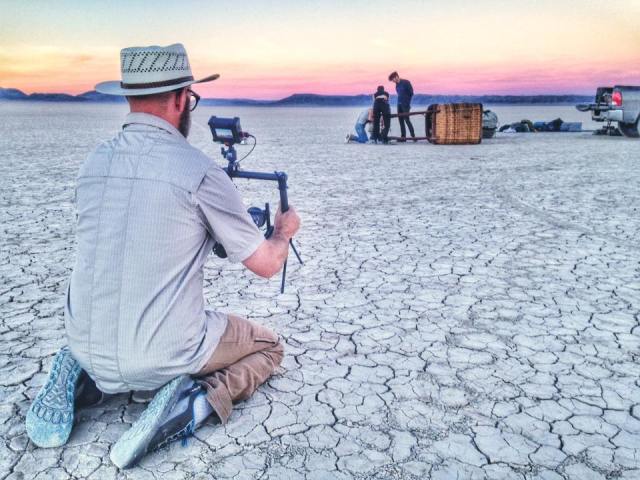
This is probably about 6:30am on test flight day, and there’s Travis with one of his many wonderful toys
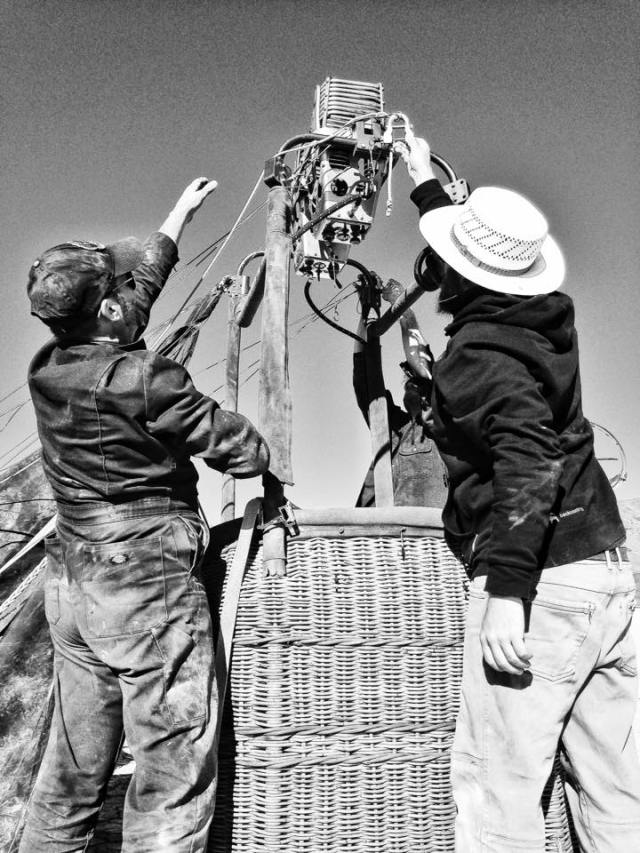
Prepping and assembling the balloon and all the gauges and hoses for the suit was about a four-hour process (hence the need to get up at 4am) and we had to get that balloon in the air before the wind picked up. That’s Cameron on the left, Travis on the right.
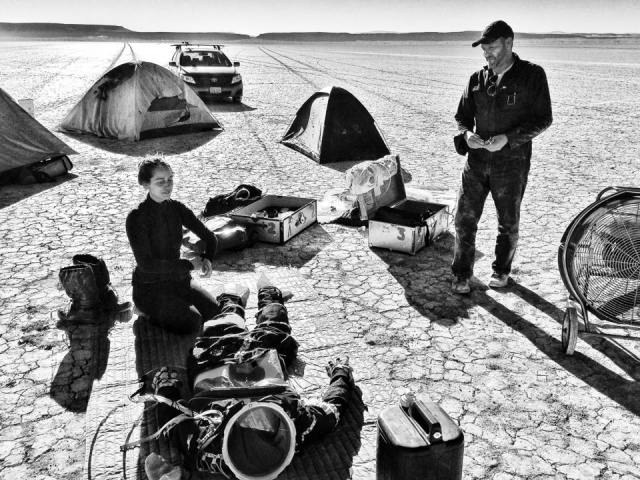
Our little camp in the middle of nowhere, a good mile from any road. That’s Paulina helping to get the suit properly folded after the test flight.
The flight itself was very short, but well worth the time and expense. Cameron came up with a checklist of things that need refining and modification, and we’re working away as time allows, back here in Portland. About a week ago I went down to Cameron’s office/workshop to help out and have a meeting about the results of the test flight, and Paulina, who’s been helping handle the suit, decided to try it on to get a better understanding of what it’s like on the inside.
First you put on a set of long johns that have cooling tubes sewn around it. The tubes are attached to a container of ice water and keep the person in the suit from overheating, which happens VERY fast, even when it’s extremely cold outside the suit. The cap has cooling lines and an intercom system.
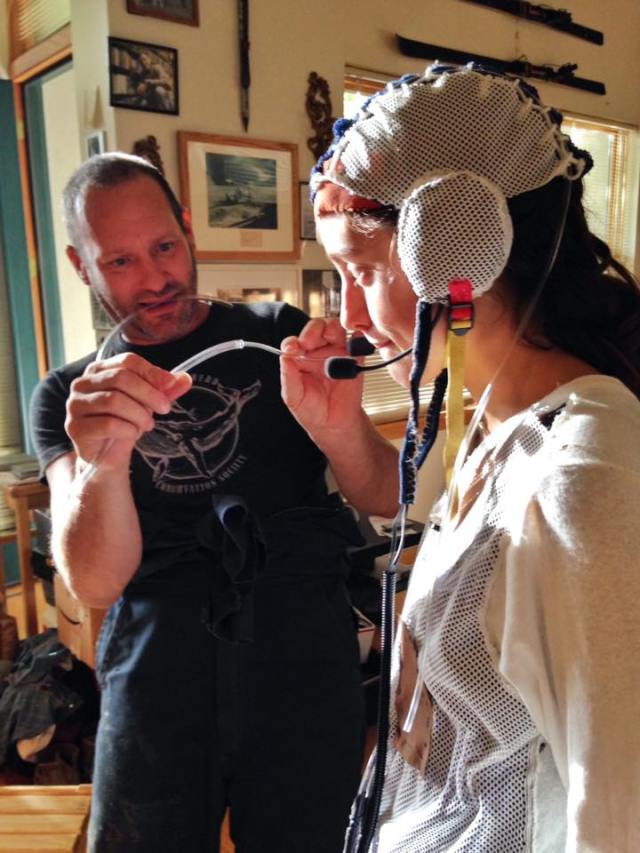
Next is the yellow inflatable suit. This is the pressure suit that keeps the person’s blood pressure normal at high altitudes, by having air pumped in at high pressure.
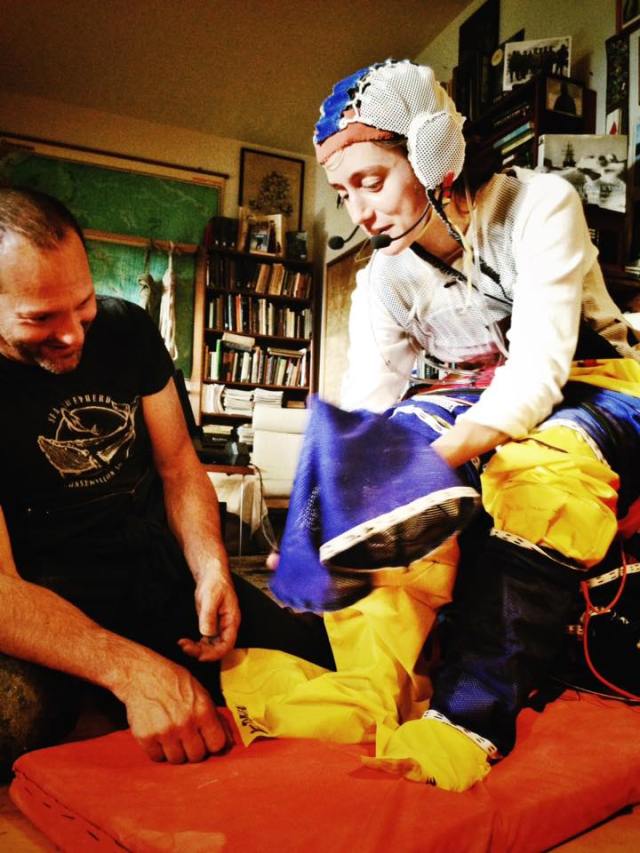
And then the outer layer: A blue mesh that’s there mostly to keep the yellow inflated suit from going “POOOF!” and turning into a Gumby-shaped balloon.

Once Paulina was suited up, Cameron explained how to operate the air flow gauges and read the pressure dials. Very important info when you’re sealed in a space suit!
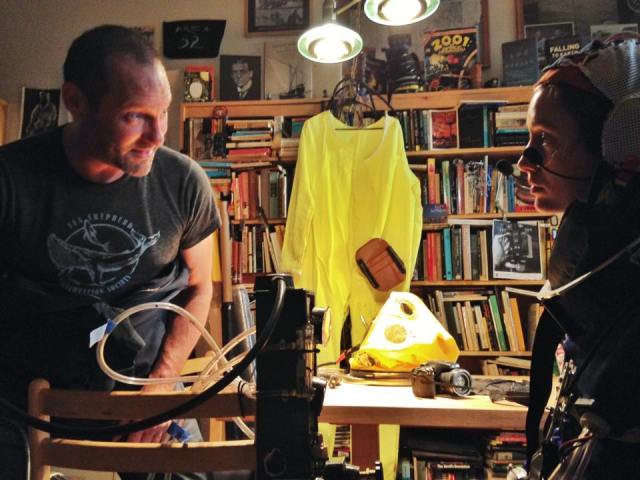
Last is the helmet. I love this part. Remember I said this suit is homemade? I wasn’t kidding. When Cameron was looking for a way to seal the helmet to the suit, he found a genius solution: The locking rings from a pressure cooker. And it totally works! 🙂
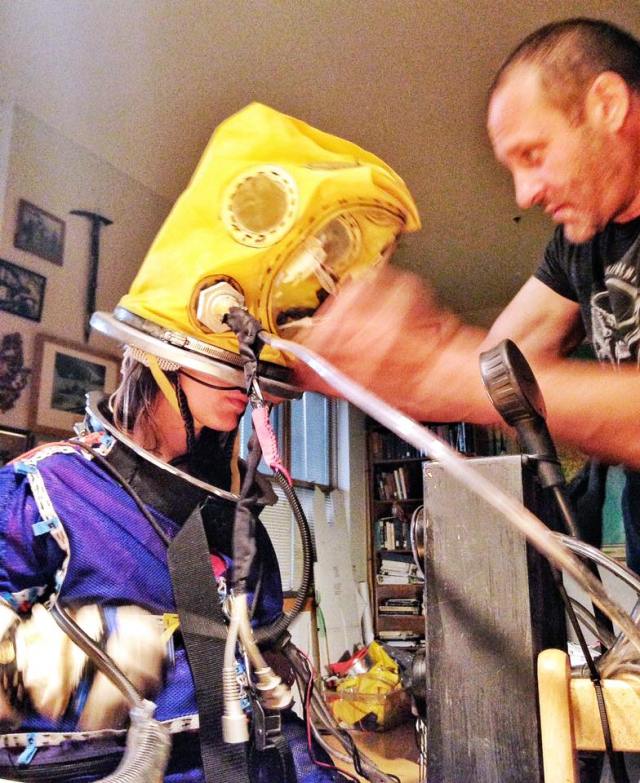
One of the hardest parts of making your own space suit is funding. Cameron is a college professor, and the pay ain’t what it used to be. He’s gotten some generous donations along the way, but he ALWAYS welcome more, and we’re going to need those funds to get to the next level, and the next flight test. If you’d like to donate and help the project, here’s some info. (we’re working on getting a Kickstarter going but it’ll be a while before that’s up and running). You can also “like” the Facebook fan page to get updates on the project. If you live in the Portland area and are interested in volunteering with the project, you can also message Pacific Spaceflight on Facebook.
Thank you for reading, and I’ll be sure to let you know when we’re getting ready to head out to the desert again!